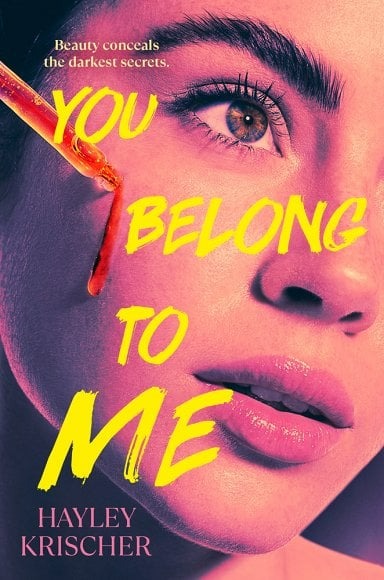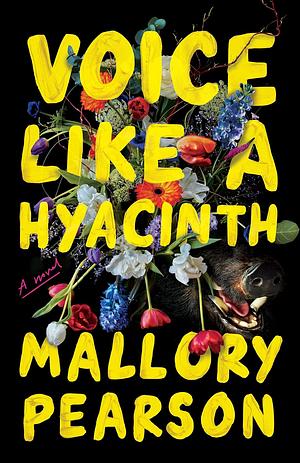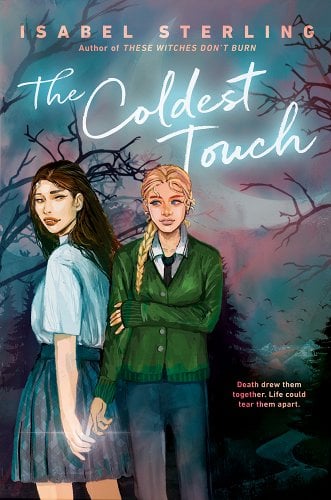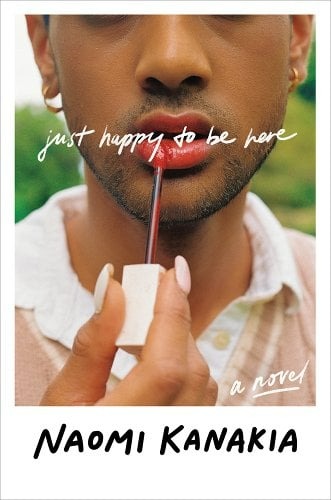Hayley Kirscher’s You Belong To Me (out April 15, 2025) is a compendium of hot topics seemingly tailored for the algorithm. It’s got cults, skincare, girls kissing, goths, spot-on references to gothic literature. It’s almost tailor-made for the TikTok savvy teen. It’s also an empathetic exploration of power, belonging, and identity. Refreshingly, that last one doesn’t haveRead More
Sapphic Throwback: Why Annie on My Mind by Nancy Garden Still Resonates
I was feeling nostalgic this month and decided to re-read Annie on My Mind by Nancy Garden (she/her), one of the first queer books I ever read. My ability to remember specific plot details is notoriously bad, so it was almost like reading it for the first time. I am pleased to report, it did not disappoint! Originally publishedRead More
Calling All Basketball Gays: A Sharp Endless Need by Marisa Crane + Other Sporty Sapphic Books
Happy March Madness season! It’s just a few weeks until the NCAA tournament begins, so in the spirit of basketball, I decided to review a book about it. A Sharp Endless Need (out May 13th) by Marisa Crane is a love letter to basketball and everything that comes along with it—including falling for a teammate. IRead More
The Modern Sapphic Dorian Gray of My Dreams: Voice Like a Hyacinth by Mallory Pearson Review
Mallory Pearson’s newest release, Voice Like a Hyacinth, follows five best friends, Jo, Amrita, Saz, Caroline, and Finch, throughout their senior year at a prestigious art school. Senior painting students like our five main characters are expected to compete for the opportunity to have a solo gallery dedicated to their art. Jo, Amrita, Saz, Caroline,Read More
Classic Sapphic YA Throwback: Keeping You a Secret by Julie Anne Peters Review
Keeping You a Secret by Julie Anne Peters (she/her) is one of the first sapphic books I ever read. While I can’t remember exactly when I picked it up, my educated guess would be somewhere between high school and the beginning of college, probably before I ever even kissed a girl. This month, I decidedRead More
Even Vampires Hate High School: The Coldest Touch by Isabel Sterling
I’ve had The Coldest Touch by Isabel Sterling on my bookshelf for a couple of years—a victim of the neverending TBR list. I would say that any vampire love story is perfect for me, but the sparkly baseball family forced me to have to qualify that statement long ago. The Coldest Touch has none of the problems of thatRead More
More Than a Statistic: Every Variable of Us by Charles A. Bush
Buy this from Bookshop.org to support local bookstores and the Lesbrary! Alexis Duncan is a Black teenage girl from Philadelphia whose incredible basketball skills are her one ticket to receiving a scholarship and getting out of her poverty-stricken neighbourhood. However, after getting injured during a shooting at a high school party and being told sheRead More
Witches Under Modern Systems of Oppression: How to Succeed in Witchcraft by Aislinn Brophy
Buy this from Bookshop.org to support local bookstores and the Lesbrary! At the top of the T.K. Anderson Magical Magnet School’s leaderboard is Shay Johnson. One of the most impressive and successful witches among her peers, this almost guarantees her the coveted Brockton Scholarship which would allow her to register to the university of herRead More
Messy Roots: a Graphic Memoir of a Wuhanese American by Laura Gao
Buy this from Bookshop.org to support local bookstores and the Lesbrary! Messy Roots is Laura Gao’s memoir of her childhood and coming of age, first in Wuhan, China, then an early move to Texas, and finally through her choices of college in Pennsylvania and a job in the Bay area. As a Chinese American immigrant,Read More
A Trans Teen Finds Her Words: Just Happy to Be Here by Naomi Kanakia
Buy this from Bookshop.org to support local bookstores and the Lesbrary! Tara is the first trans girl to attend Ainsley Academy, an all-girls school. She finds it hard to fit in, especially considering that she’s also one of the few students of color. One place she does feel like she belongs is the Sibyls, anRead More






